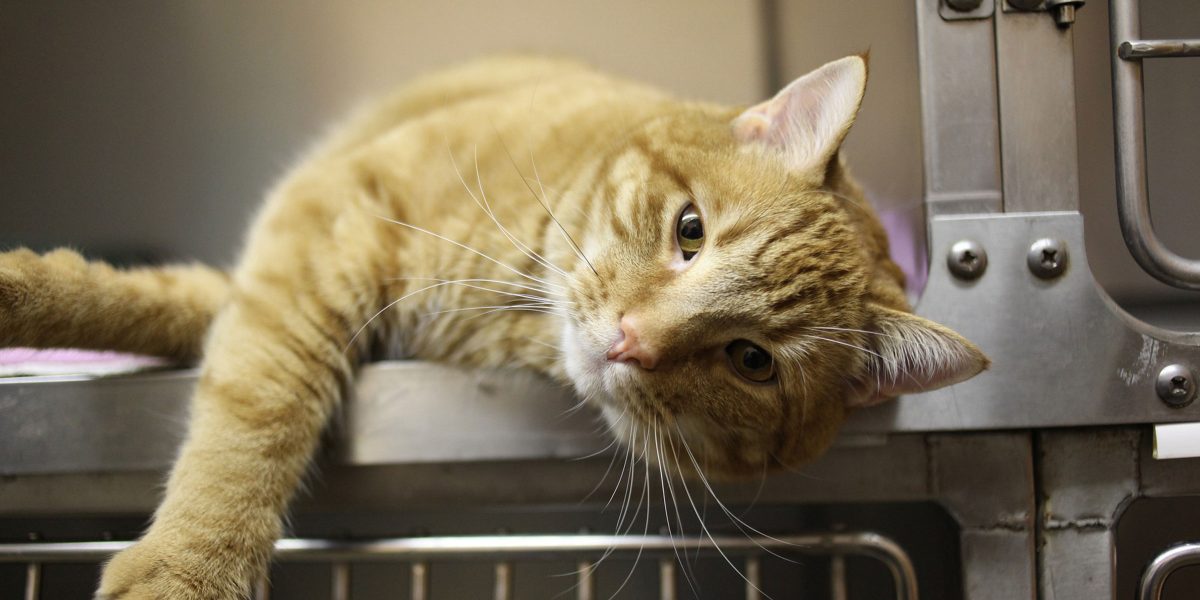FIV, also known as Feline AIDs, is a virus that affects cats and damages their immune system. Like HIV in humans, cats with FIV are vulnerable to infections, and normally harmless bugs can cause severe disease, the virus can also increase the risk of certain cancers. Unfortunately, there’s no cure for FIV – once cats are infected, they will carry the virus for life, although it can take several years for any symptoms to develop.
PDSA Vet Nurse Nina Downing said: “FIV can be a life-limiting condition, as it affects a cat’s immune response, making it difficult for them to deal with infections that they would otherwise be able to fight off. It’s important for cat owners to understand how they can prevent their furry family member from becoming infected. At the same time, owners also need to be able to spot the symptoms and know how to keep their puss as healthy as possible if they do catch the virus.
“The good news is that there are some steps you can take to make sure your beloved cat is able to continue leading a happy, healthy life.

Reducing the risk
“The best way to protect your feline friend is by reducing the risk of infection. The virus is spread via saliva, most commonly through bites, so cats who are prone to fighting can be vulnerable – one of the reasons we always recommend neutering, as entire cats, particularly males, are more likely to fight. Fortunately grooming or sharing water bowls doesn’t appear to be a common way of passing on the virus.
Spotting the symptoms
“FIV develops slowly, so it often takes two to five years for symptoms to appear. Some of the symptoms can include low energy, chronic diarrhoea and swollen glands, as well as mouth problems such as sore gums. If your cat has general ill health, or suffers with repeat infections, these can be indicators of a problem and you should take them to your vet for a health check.
“If you think your pet has been infected, a simple blood test by your local vet can usually diagnose FIV.
Treatment and Protection
“FIV positive cats can live symptom free for several years after diagnosis, but unfortunately may have a shortened life expectancy once they start to suffer from recurrent illnesses. While there might not be a cure, it’s important to do everything you can to protect them from infections and keep them as healthy as possible.
“It’s also really important that you keep your feline companion indoors if they have the virus. Protecting them from other cats and the outdoors will reduce the chance of infections and prevent the spread of FIV to other cats.
“Diet also plays a role in protection, so you will need to feed your puss high-quality food. Look out for cat food that’s labelled ‘complete’, as this will have the correct balance of nutrients your four-legged friend needs to stay healthy. Make sure that you wash thoroughly any food bowls and utensils and avoid feeding them raw meats and unpasteurised dairy products which can contain germs.
“You’ll also need to keep up-to-date with worming and flea treatment, as well as appropriate vaccinations – your vet will be able to advise you on this. Regular check-ups with your vet will likewise be important, I’d recommend booking an appointment every six months at the very least.”
PDSA is the UK’s largest vet charity. We’re on a mission to improve pet wellbeing through prevention, education and treatment. Support from players of People’s Postcode Lottery helps us reach even more pet owners with vital advice and information. This winter, your support is vital for poorly pets – find out how you can help us give pets a fighting chance at www.pdsa.org.uk/pdsa-chance
We regularly write about all things relating to cats on our Blog Katzenworld!
My partner and I are owned by five cheeky cats that get up to all kinds of mischief that of course, you’ll also be able to find out more about on our Blog
If you are interested in joining us by becoming a regular contributor/guest author do drop us a message @ info@katzenworld.co.uk .


2 Comments